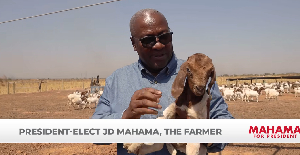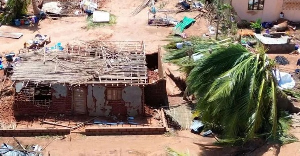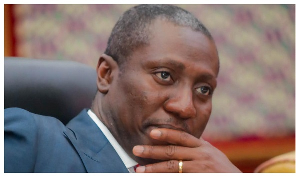Accra, Jan. 27, GNA - African Development Bank (ADB) Group President Omar Kabbaj has described 2004 as "a remarkable year" for both the Bank and its regional member countries.
Mr Kabbaj told Ambassadors and representatives of the institution's 77 member countries based in the Bank's temporary headquarters in Tunis that macroeconomic indicators for the Continent - growth in gross domestic product (GDP), inflation, fiscal balance and the current accounts - were some of the best over two decades.
"Some 22 countries achieved GDP growth rates of above five per cent and 17 others recorded growth rates of between three and five per cent... only two countries witnessed negative growth rates," he said. A statement from the ADB received by the GNA quoted Mr Kabbaj as saying regional GDP growth rate reached an average 4.5 per cent in 2004 - the highest since 1996.
Mr "Africa's leading reformers" - Burkina Faso, Ghana, Mali, Mozambique, Tanzania, Uganda, Tunisia and Morocco - continued to perform well while Central and East Africa witnessed the most robust growth performance, with sub-regional GDP growth rates of 8.7 and 6.5 per cent, respectively.
"The strong economic growth in Central Africa was driven by post-conflict dividends and higher oil prices while the performance in East Africa was
boosted by the bumper harvest of 2004," the statement said. Mr Kabbaj said support from the international community remained critical, especially with respect to official development assistance, debt reduction, and market access for Africa's exports. The ADB President welcomed the proposal by the United Kingdom to launch a Marshall Plan for Africa and to place the Continent's development at the top of the G8 agenda.
Mr Kabbaj said in 2004 the Bank Group registered the highest level of lending, grants, and debt relief operations in its history, its disbursement levels were also the highest ever and the net income of the Group was a record.
He said the African Development Fund (ADF) had the highest replenishment since its establishment in 1972, the Bank recruited the largest number of new staff in a single year and the number of government officials who participated in the training programs offered by the Joint Africa Institute also reached record levels.
Mr Kabbaj said the Bank's lending, grant and debt relief activities reached 4.4 billion dollars with two billion dollars going to the poorest countries in concession loans and grants.
The Bank Group's operations in Africa's middle-income countries, he said, supported key reform programmes and provided financing to strengthen private sectors, upgraded infrastructure and generated employment opportunities.
In the low-income countries, the focus was on poverty reduction and the promotion of sustainable economic growth, with priority given to agriculture and rural development, education and health.
Another major area of intervention for the Bank Group, the President said, was regional cooperation and integration, with some 183 million dollars in support of regional infrastructure, capacity building for regional economic communities and the creation of an enabling regional environment for the private sector.
In this regard, the Bank had established a NEPAD Support Unit and a Regional Integration Unit and drawn up a five-year NEPAD Infrastructure Short-Term Action Plan, which outlined priority investment projects and programmes for the period up to 2007.
In 2004, the Bank launched two major initiatives Mr Kabbaj said. The first, the Rural Water Supply and Sanitation Initiative seeks to accelerate and increase by 80 per cent over the next decade access to sustainable water supply and sanitation for rural populations in Africa.
The second, the Bank's Post-Conflict Countries Facility (PCCF) will assist, on a case-by-case basis, countries coming out of conflict. Mr Kabbaj said the Bank Group continued to develop, refine, and implement financial policies designed to ensure that its financial assets and liabilities were deployed in an optimal manner. It has, as a result, continued to generate a healthy level of earnings, thereby further solidifying the financial base for its development assistance activities - a trend that has been sustained over the past decade.
Click to view details



Business News of Thursday, 27 January 2005
Source: GNA
















